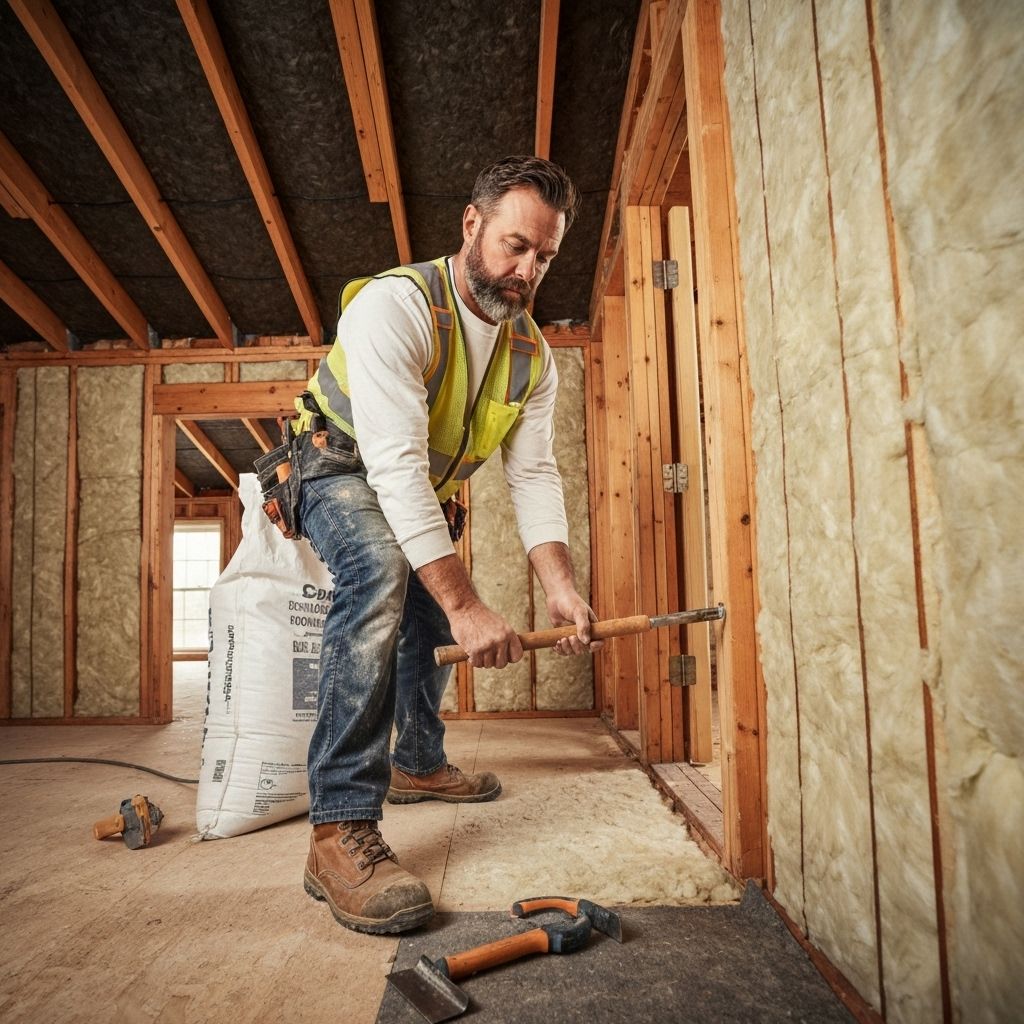Close the Deal: Professional Advice for Maximum Home Energy Efficiency

In terms of making your home cozy, eco-friendly, and worthwhile, adequate insulation is paramount. Whether you're dealing with the intense heat of summer or the biting cold of winter, insulation serves as your home’s primary defense against the elements. With energy costs increasing and environmental concerns at the center of attention, investing in optimal home insulation is not just advantageous; it’s crucial.
In this thorough guide, we’ll explore expert tips and essential information to help you grasp the ins and outs of home insulation. From knowing how to check your home's insulation to deciding between batt and blown-in materials, we have you assured. You’ll learn all you need to know from R-values to air sealing techniques, ensuring your home is prepared for the seasons while maximizing energy efficiency and comfort. Get ready to make the investment on insulation and convert your living space into a cozy retreat that reduces expenses and increases your home's value.
Grasping Home Insulation
Home insulation plays a vital role in maintaining a cozy living environment and also boosting energy efficiency. It functions by minimizing heat transfer between the inside of your home and the external environment. During the winter months, insulation maintains warmth within, avoiding unnecessary heating costs. In the warmer months, it assists ensure a cooler interior by preventing heat from infiltrating. This equilibrium doesn't only enhance comfort but can also significantly reduce energy bills.
There are many types of insulation materials on the market, each with its own advantages and disadvantages. Common materials include fiberglass batts, blown-in cellulose, spray foam, and others. The selection of insulation is determined by several factors, including the area of your home being protected, budget, and desired R-value, which assesses insulating effectiveness. Understanding insulation companies of these materials will help you take an informed decision on the most suitable fit for your home.

Another important aspect of insulation is air sealing. Before putting in insulation, sealing gaps and drafts can enhance the performance of the insulation installed. Air leaks can greatly lower insulation capability, making it important to fix these problems before continuing with any insulation project. By choosing high-quality insulation and ensuring your home is well sealed, you can create a more energy-efficient and pleasant living space.
Selecting the Right Insulation Type
Choosing the right insulation type for your home is essential for improving energy efficiency and comfort. There are numerous options available, each with distinct properties and suitable applications. Batt insulation, commonly made from mineral wool, is an convenient choice for various DIY projects. It performs well in wall cavities and attics with typical stud spacing. On the other hand, spray foam insulation is ideal for filling difficult spaces and enhancing thermal performance in existing structures, providing high coverage with less seams.
When choosing between batt and blown-in insulation, consider your project needs and budget. Batt insulation might be more cost-effective for large areas with direct access, while blown-in insulation, though slightly more expensive, offers superior coverage and can help limit air leaks in hard-to-reach places. Additionally, evaluate the R-value of each type, as this rating will inform you of the insulation’s effectiveness at reducing heat transfer. Higher R-values generally suggest better thermal performance.
Ultimately, your choice should also take into account the specific requirements of your home. Factors such as climate, local building codes, and potential moisture hazards will affect the insulation type that most effectively meets your needs. This considered selection will not only enhance your home's comfort and energy efficiency but also add to its long-term value and resilience.
Upkeeping and Upgrading Your Insulation
Consistent maintenance of your thermal barrier is vital to guarantee optimal performance and energy efficiency. Start by evaluating your home's insulation from time to time, particularly after extreme weather events. Inspect for visible indications of wear, such as drooping, moisture damage, or pest infestations. If you detect any concerns, tackle them immediately, as delays can lead to escalated energy costs and further damage. Maintaining your thermal barrier clean and dry will substantially extend its lifespan and effectiveness.
When it comes to upgrading your insulation, knowing when to make the change is important. If your thermal barrier is more than twenty years old, it may be time for an evaluation. Look for the indicators that suggest an upgrade is necessary, such as increased energy bills or inconsistent temperatures throughout your home. Review the R-values of your existing insulation compared to modern standards to ensure your home's power efficiency satisfies today's expectations.
Always consider the kind of insulation that best suits your needs when planning an improvement. Various areas of your home may require different materials, and options like batt, blown-in, and foam spray insulation all have unique benefits. Talking with a expert can provide valuable insights into the best solutions for your specific situation. Choosing wisely not only boosts your home's comfort but also results in long-term savings and increased property value.
